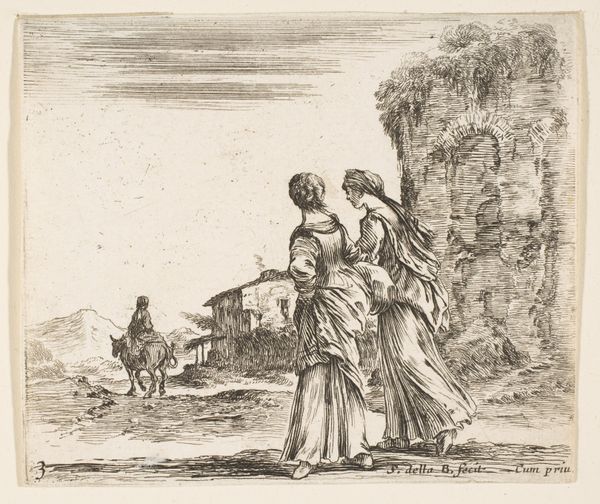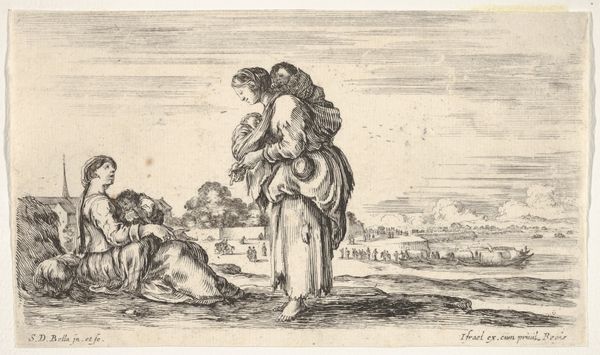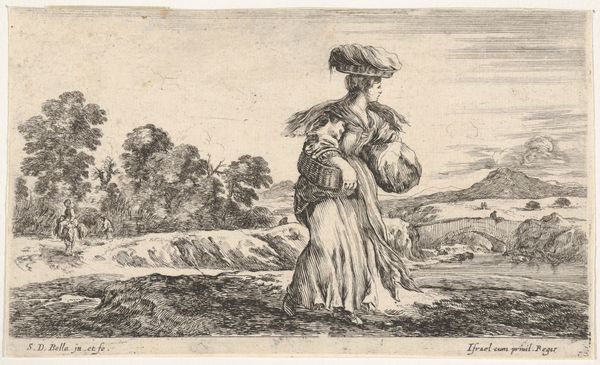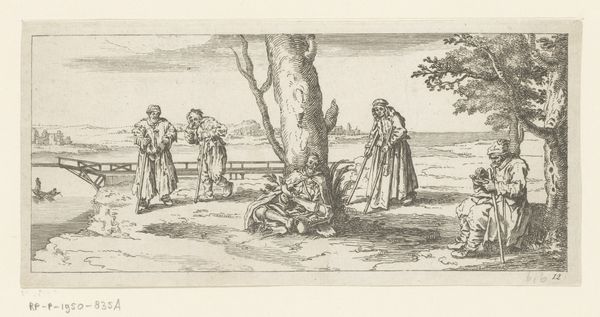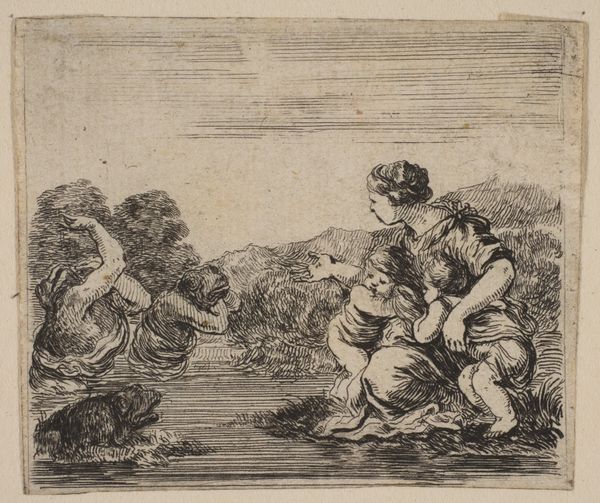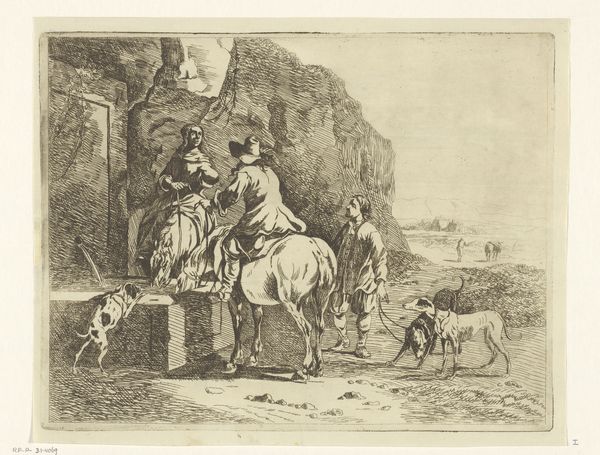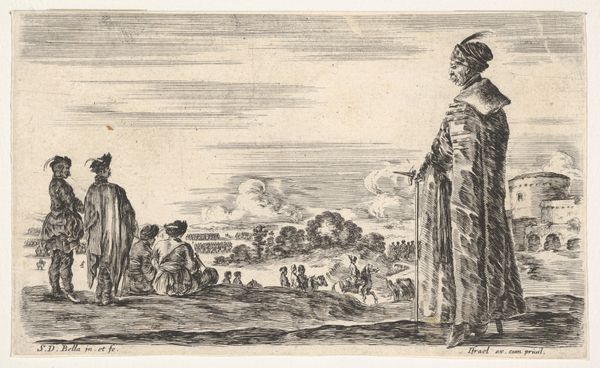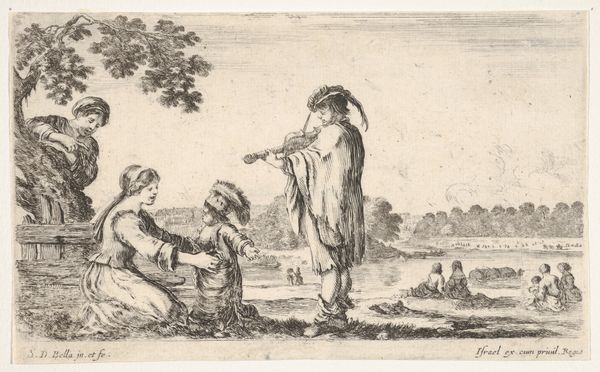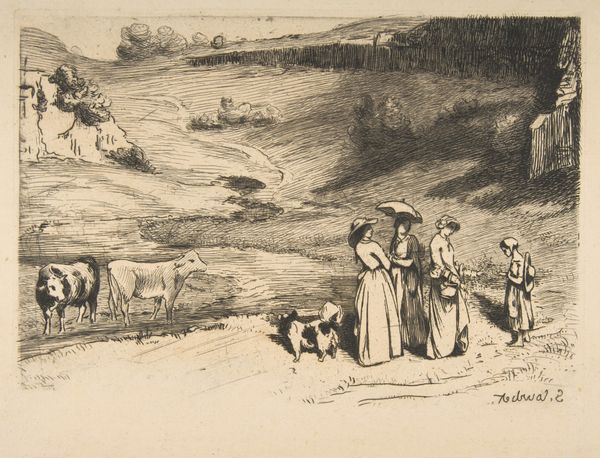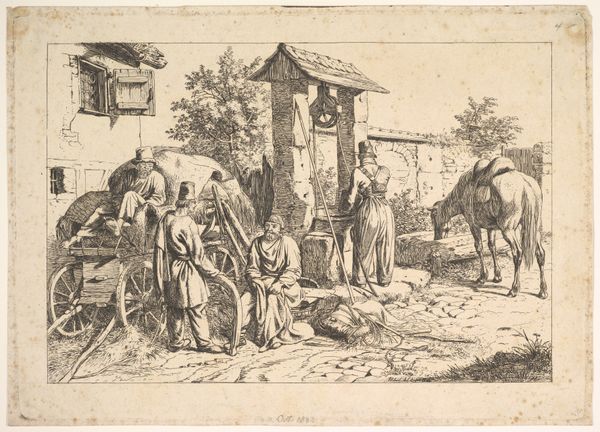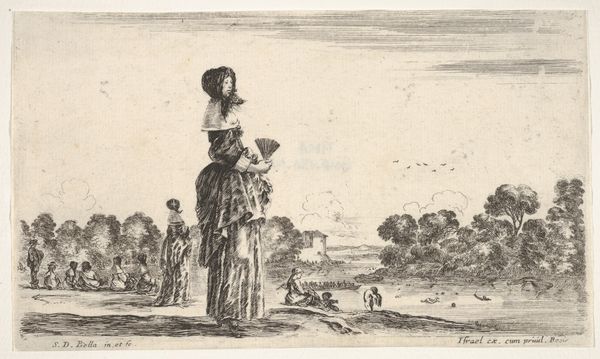
Plate 3: two girls walking towards the right, seen from behind, a woman on a horse to right in background, from "Diversi capricci" 1643 - 1653
0:00
0:00
drawing, print, etching
#
drawing
#
baroque
# print
#
etching
#
landscape
#
figuration
#
horse
#
genre-painting
Dimensions: Sheet: 3 1/16 × 3 15/16 in. (7.8 × 10 cm)
Copyright: Public Domain
Curator: Today, we are looking at Plate 3 from "Diversi capricci", crafted between 1643 and 1653 by Stefano della Bella. This piece, currently held at the Metropolitan Museum of Art, utilizes etching techniques. Editor: Immediately, I'm drawn to the stark contrasts, the play of light and shadow created by the etching. It feels somewhat…unsettled, like a stage set before the actors arrive, yet filled with a palpable stillness. Curator: Della Bella was working during the Baroque period, and while this particular print displays a slice of genre painting, its placement within the 'Capricci' suggests a deeper probing of social norms, perhaps subtly critiquing class or gender dynamics through the presentation of these figures in an open, almost liminal landscape. Note the backs of the women as they walk forward; the composition implies these women are walking *toward* something; but they don't recognize the power dynamics implicit in their performance for an unknown beholder. Editor: True, there is that sense of anticipation. However, formally, the eye is led expertly through the composition by those contrasts. The artist guides us—note how the shadowed foreground grounds the two women. Then, our gaze then follows the receding lines of perspective towards the rider. Curator: How might we consider this depiction in light of 17th-century Italian social codes? I can’t help but see in it a reflection of the limited autonomy afforded to women of the time, subtly conveyed through their positioning within the broader societal landscape, itself represented by the receding architectural spaces and figures in the distance. Their visibility hinges on this visibility on display. Editor: The delicate rendering of texture – the way he uses varied densities of line to suggest fabrics, stone, or atmosphere – speaks volumes. What about the balance, the strategic weighting of elements? The ruin to the left counters the open vista to the right creating an intricate harmony. It transcends a simple socio-political commentary, doesn’t it? It functions, primarily, as a visually satisfying whole, a delicate interplay of forms. Curator: Perhaps. But is that inherent satisfying whole *itself* dependent on established forms that reinforce, often unconsciously, the very structures it may or may not attempt to question? We could read it that the composition does subtly implicate how norms of public and private space are being observed. Editor: I appreciate your insights into the piece’s potential reflections on social codes, contextualizing this etching offers such valuable perspective. Curator: And I value your sharp observation of the formal elements that create such compelling visuals.
Comments
No comments
Be the first to comment and join the conversation on the ultimate creative platform.
